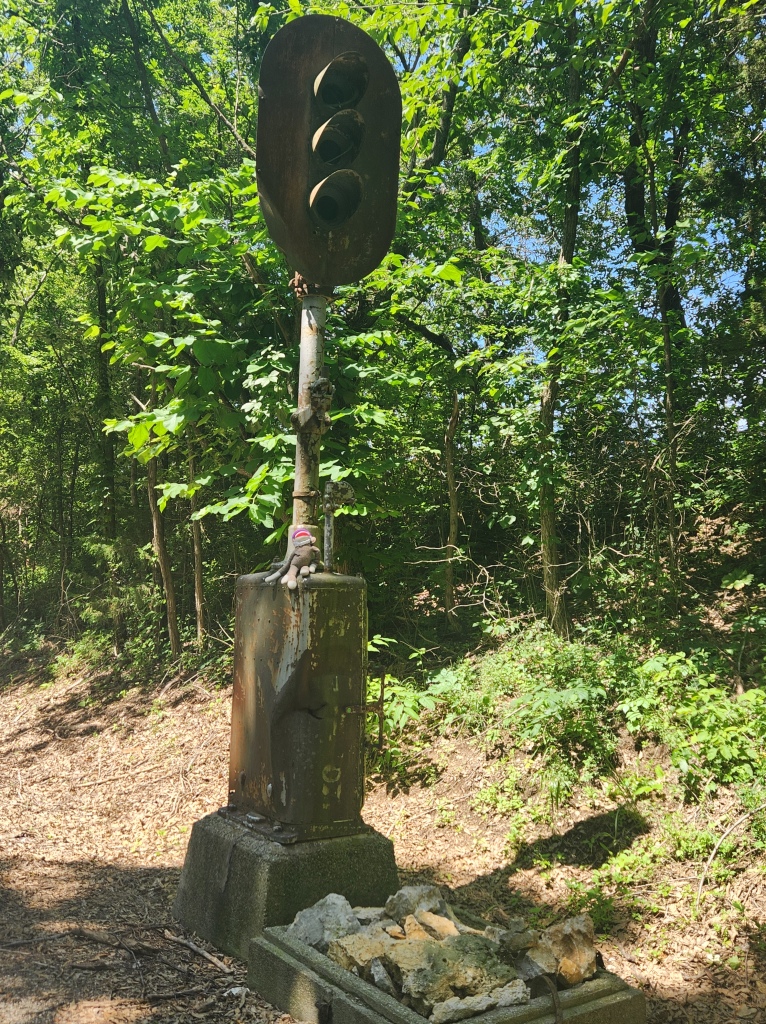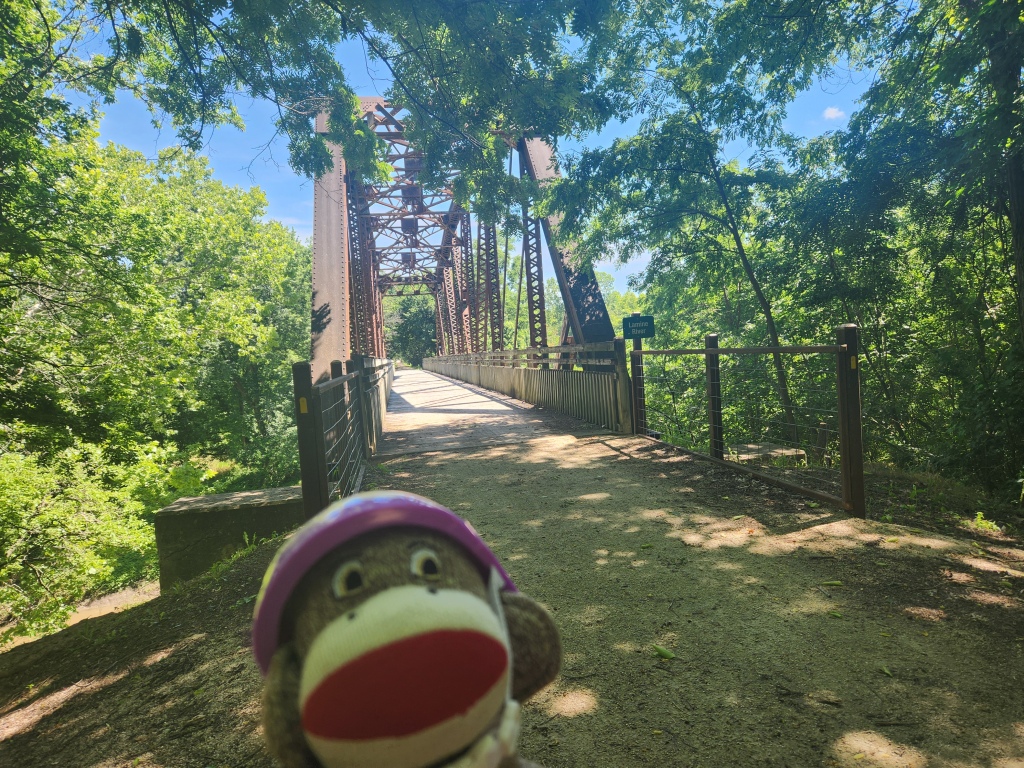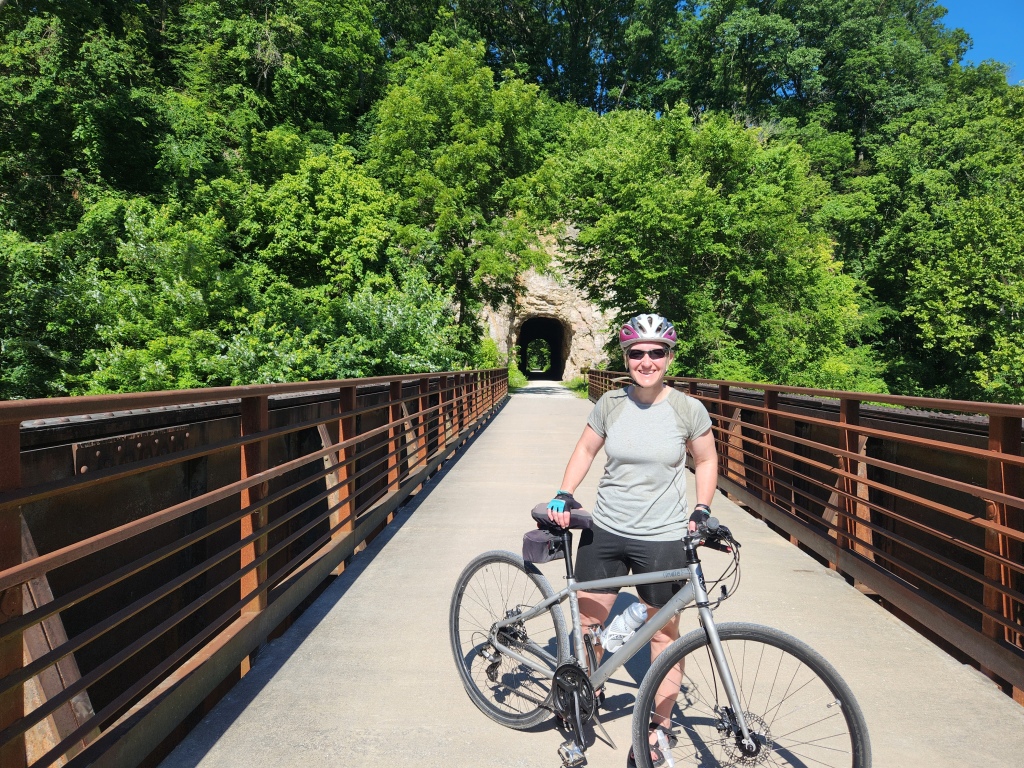On October 4, 1986 the Missouri River flooded its banks and damaged the stretch the Missouri-Kansas-Texas Railroad track that stretched between Sedalia and Machens, Missouri. This in itself wasn’t particularly unusual. The area is prone to flooding and had proven a problem for the railroad company since the earliest days of the route. What was unusual about the 1986 flood was that the company decided to abandon rather than repair the route.
This turned out to be good news for the biking and hiking enthusiasts of the Great State of Missouri. With help from a generous donation from Ted and Pat Jones (of the Edward Jones Financial Investment Company based in St. Louis), the Missouri Department of Natural Resources purchased the abandoned right-of-way to use as a trail.
The first section of the crushed limestone MKT trail, shortened to KT, which became simply “the Katy” opened in 1990 around Rocheport, Missouri. Today it officially extends from Clinton in the western part of the state to Machens in the east, comes in at about 239 miles, and is the longest recreational rail trail in the United States. Several spurs offer additional distance, including a 47-mile Rock Island Spur that runs to Kansas City.
My sister and I were happy enough last week to hop on our bicycles and crush the route between Clinton and St. Charles. That’s officially 12.7 miles from the end in Machens, but St. Charles is a better place to stop and get picked up and taken out for celebration barbecue and cookies. Also, if we add in all of the spurs into towns that we took along the way, we more than made up the difference.
It turns out a lot of cyclists (and some hikers) tackle the whole Katy. We met quite a few cyclists, some of them traveling the same direction as us, some day riders who had done the whole thing on previous occasions, some with light loads and dedicated sag wagons, and others carting their own camping gear. Some riders do the full length in as little as three days. Five to six days seems to be the most common.

We did six, which was good enough for us. And we stayed in hotels and B&Bs along the way, because we couldn’t imagine that sleeping on the ground was going to be restful enough for us after forty-plus miles of biking on crushed gravel to then be able to get back up and do it again the next day. We did carry our gear with us, though, which was enough of a burden.
The trail, though straight and flat-ish, requires a lot of work. Some patches are very well groomed. Some not so much. After one stormy night, we had to dodge quite a few downed branches. There are some stretches where large gravel and washouts make the riding all the more challenging, and the western portion of the trail all the way to about a mile outside Boonville is often slightly uphill, just enough to be a slog.
But the trail is beautiful, with much of it running between the Missouri River and gorgeous bluffs. It crosses over numerous creeks on pretty truss bridges, through tunnels, forest, wetlands, prairie land, rolling farmlands, and past historic remnants of the railroad.
As challenging as some days were, as sore as our bodies ended up being, and as tired as we were by the time we lugged our bikes from the trail to our stops each night, I’m awfully glad we did it. I don’t know that I learned anything profound from the experience, though someday when my backside is less sore, I will probably think of some way to turn the experience into a terribly moving and deeply reflective personal essay. For now, it’s enough to have crushed the Katy for the bragging rights.






